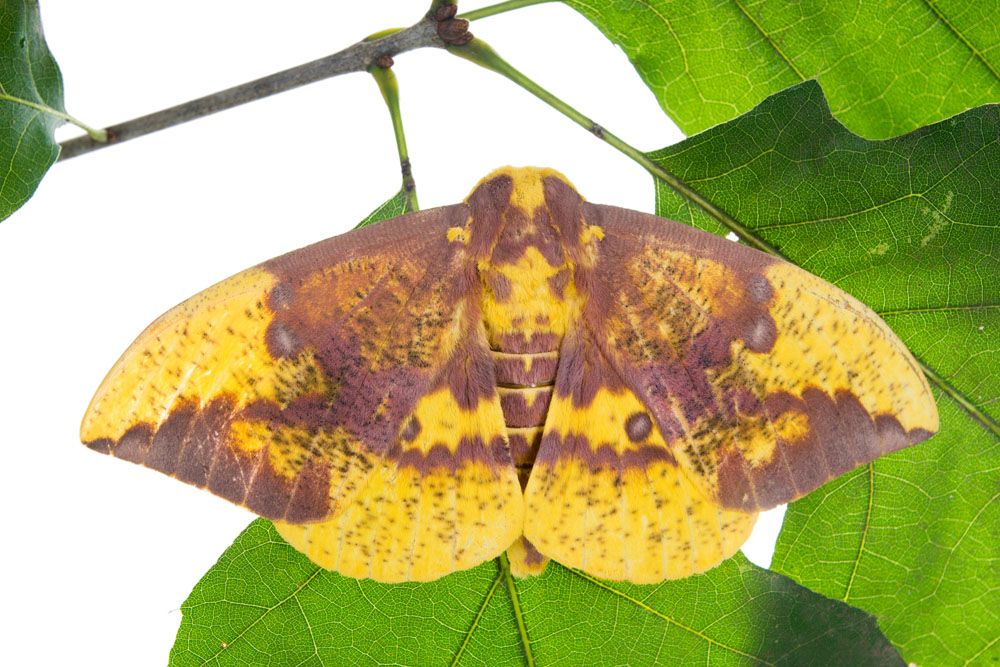
Imperial Moth – Eacles imperialis
Imperial Moth – Eacles imperialis
Common Name: Imperial Moth
Latin Name: Eacles imperialis
Appearance:
The Imperial Moth is a large moth with a wingspan of 3.5 to 7 inches (9 to 18 cm). The wings are pale gray with reddish-brown markings, and the body is covered in dense fur-like scales. The caterpillars of the Imperial Moth are large and green, with a series of red and white stripes along their bodies.
Egg: The eggs of Imperial Moths are tiny and spherical and are usually laid in clusters on the underside of leaves.
Pupa: The pupae of Imperial Moths are brown and oval-shaped and are found on or just below the soil surface.
Larva: The larvae of Imperial Moths are large, green, and have a series of red and white stripes along their bodies. They feed on the leaves of trees and shrubs, including oak, hickory, and maple.
Adults: The adult Imperial Moths have a wingspan of 3.5 to 7 inches (9 to 18 cm) and are pale gray with reddish-brown markings. They have large, feathery antennae, and the females are larger than the males.
Host plant:
The Imperial Moth caterpillars feed on the leaves of trees and shrubs, including oak,
Hickory and maple.
Territory:
The Imperial the moth is found in the eastern half of North America, from Maine to Florida and west to Texas.
Damages caused by Imperial Moth:
The Imperial Moth does not cause significant damage to host plants, as the caterpillars feed on leaves but usually do not defoliate entire trees or shrubs.
Life history and Habits:
The Imperial Moth is a solitary species, with adults emerging from their cocoons in late spring or early summer. The females lay their eggs on the Leaves of host plants and the caterpillars emerge and begin feeding on the Leaves. The larvae snowball and molt several times before pupating on or just below the soil surface in a cocoon. The adult moths emerge from their cocoons in late summer or early fall, mate, and then die shortly afterward. The Imperial Moth has one generation per year.
